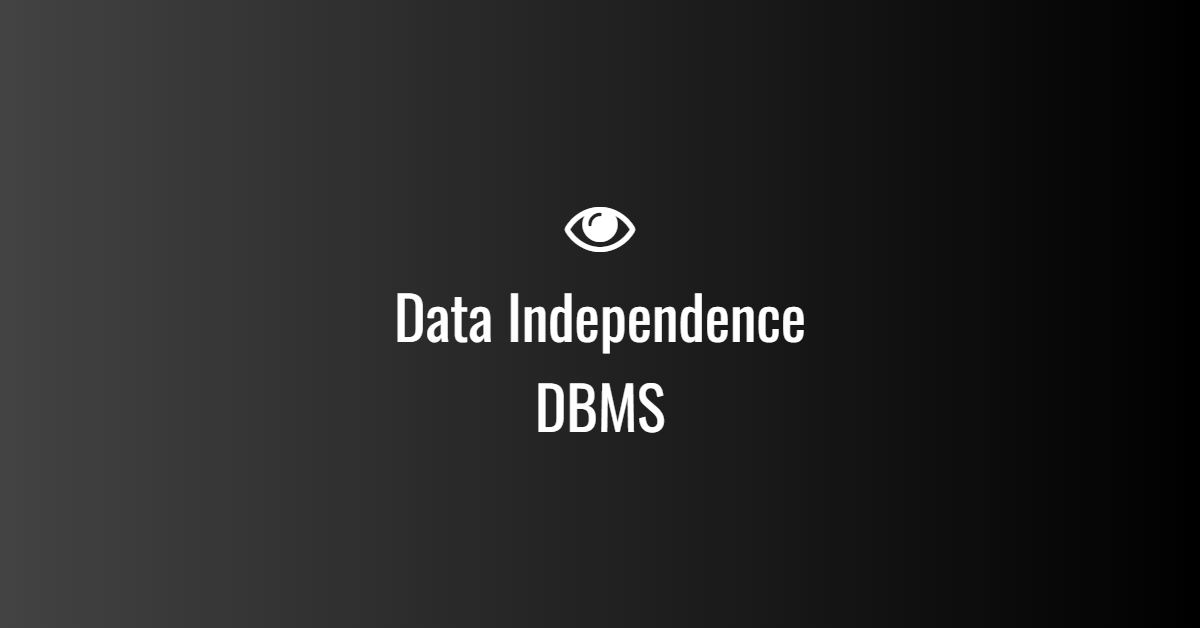
Data Independence in DBMS
Introduction
Data Independence is a key feature of a Database Management System (DBMS) that allows changes to be made at one level of the database without affecting other levels. This helps in efficient database management, flexibility, and system scalability.
Data independence is categorized into two types:
- Logical Data Independence
- Physical Data Independence
1. Types of Data Independence
a) Logical Data Independence
🔹 Definition: The ability to modify the conceptual schema (logical structure) without affecting the external schema (user views) or application programs.
🔹 Changes Allowed:
- Adding/removing attributes in tables.
- Merging or splitting tables.
- Changing relationships between tables.
🔹 Example: - A university database originally has a
Student(name, age, course)table. - Later, the database is modified to split
courseinto a separate table for better structure:

- Effect: The user’s view (external schema) remains unchanged, even though the logical structure is modified.
💡 Advantage: Users and applications are not affected by structural changes in the database.
b) Physical Data Independence
🔹 Definition: The ability to modify the internal schema (physical storage) without affecting the logical schema (conceptual structure).
🔹 Changes Allowed:
- Changing storage formats (e.g., moving data from SSD to HDD).
- Indexing for performance improvement.
- File organization changes (e.g., B-tree indexing, hashing).
🔹 Example: - Suppose a database originally stores data in a simple file format but later uses indexing for faster retrieval.sqlCopyEdit
CREATE INDEX idx_student_name ON Student(name); - Effect: The table structure and user queries remain unchanged, but query performance improves.
💡 Advantage: Storage and retrieval mechanisms can be optimized without affecting database operations.
2. Levels of Data Independence in DBMS
The ANSI-SPARC architecture defines three levels in DBMS:
| Level | Definition | Independence Type |
|---|---|---|
| Internal Level | Physical storage of data (files, indexing) | Physical Data Independence |
| Conceptual Level | Logical structure (tables, relationships) | Logical Data Independence |
| External Level | User views and access methods | – |
3. Comparison: Logical vs. Physical Data Independence
| Feature | Logical Data Independence | Physical Data Independence |
|---|---|---|
| Focus | Changing data structure | Changing storage methods |
| Affects | Conceptual schema | Internal schema |
| Impact on Users | No effect on user views | No effect on table structure |
| Examples | Adding new attributes to a table | Changing file organization on disk |
4. Importance of Data Independence
✅ Enhances database flexibility – Allows upgrades and optimizations without disrupting operations.
✅ Reduces application maintenance – Applications remain unaffected by structural modifications.
✅ Improves security – Separates user access layers from database storage.
✅ Optimizes performance – Physical independence allows faster query execution through indexing.
Conclusion
Data independence ensures that changes at one level do not affect other levels, making database systems more scalable, maintainable, and efficient. Logical independence protects user views, while physical independence enhances performance without affecting database logic.




